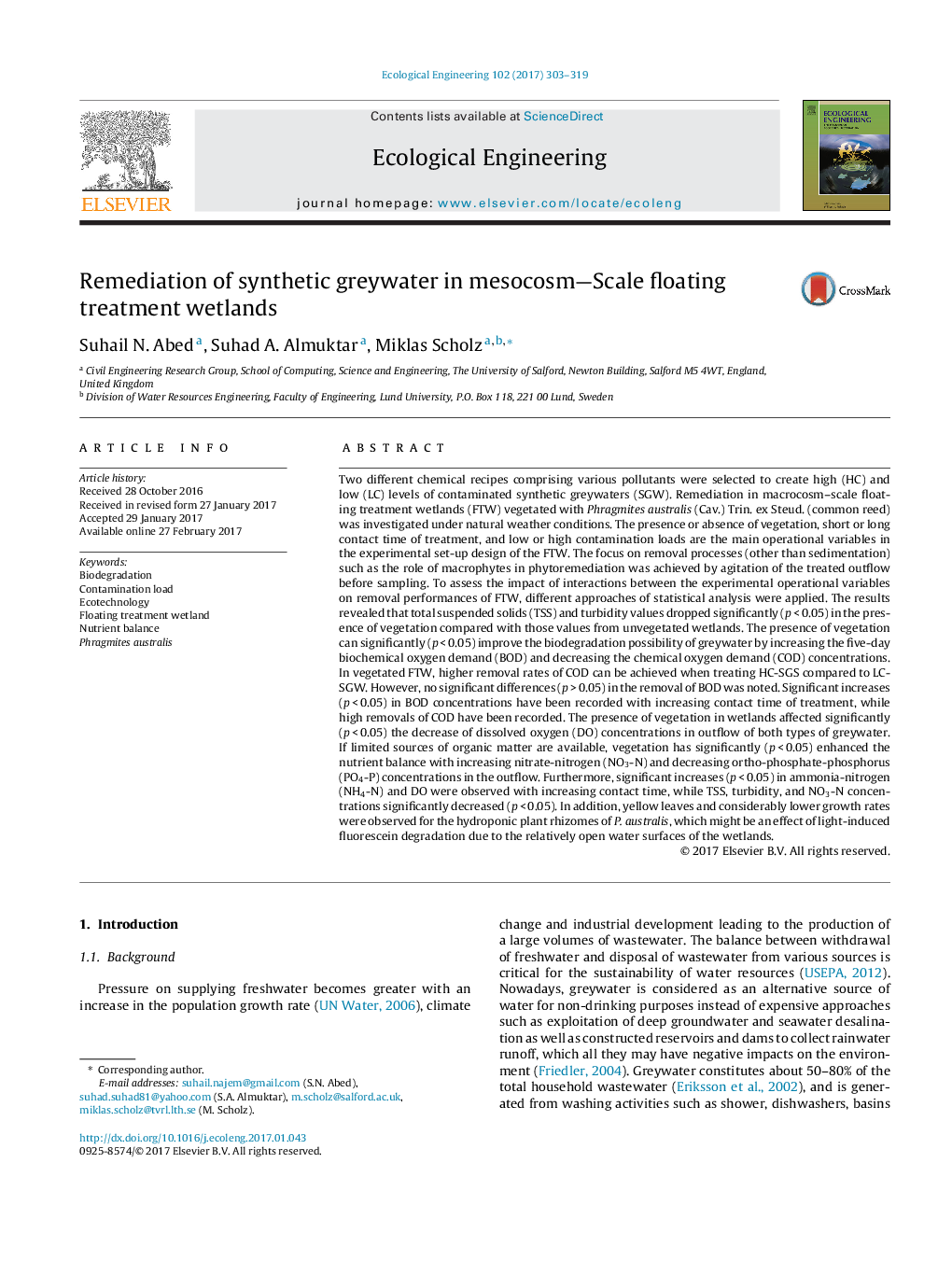| کد مقاله | کد نشریه | سال انتشار | مقاله انگلیسی | نسخه تمام متن |
|---|---|---|---|---|
| 5743774 | 1617997 | 2017 | 17 صفحه PDF | دانلود رایگان |

- Significant drop in outflow BOD values were observed all treatment system.
- Phragmites led to significant COD reductions in highly polluted wetlands.
- Phragmites did not grow well in all wetlands due to low pH and light impact.
- Increased contact time significantly reduces COD and nitrate for all wetlands.
- Nitrate is not removed well due to a lack of biodegradable organic matter.
Two different chemical recipes comprising various pollutants were selected to create high (HC) and low (LC) levels of contaminated synthetic greywaters (SGW). Remediation in macrocosm-scale floating treatment wetlands (FTW) vegetated with Phragmites australis (Cav.) Trin. ex Steud. (common reed) was investigated under natural weather conditions. The presence or absence of vegetation, short or long contact time of treatment, and low or high contamination loads are the main operational variables in the experimental set-up design of the FTW. The focus on removal processes (other than sedimentation) such as the role of macrophytes in phytoremediation was achieved by agitation of the treated outflow before sampling. To assess the impact of interactions between the experimental operational variables on removal performances of FTW, different approaches of statistical analysis were applied. The results revealed that total suspended solids (TSS) and turbidity values dropped significantly (p < 0.05) in the presence of vegetation compared with those values from unvegetated wetlands. The presence of vegetation can significantly (p < 0.05) improve the biodegradation possibility of greywater by increasing the five-day biochemical oxygen demand (BOD) and decreasing the chemical oxygen demand (COD) concentrations. In vegetated FTW, higher removal rates of COD can be achieved when treating HC-SGS compared to LC-SGW. However, no significant differences (p > 0.05) in the removal of BOD was noted. Significant increases (p < 0.05) in BOD concentrations have been recorded with increasing contact time of treatment, while high removals of COD have been recorded. The presence of vegetation in wetlands affected significantly (p < 0.05) the decrease of dissolved oxygen (DO) concentrations in outflow of both types of greywater. If limited sources of organic matter are available, vegetation has significantly (p < 0.05) enhanced the nutrient balance with increasing nitrate-nitrogen (NO3-N) and decreasing ortho-phosphate-phosphorus (PO4-P) concentrations in the outflow. Furthermore, significant increases (p < 0.05) in ammonia-nitrogen (NH4-N) and DO were observed with increasing contact time, while TSS, turbidity, and NO3-N concentrations significantly decreased (p < 0.05). In addition, yellow leaves and considerably lower growth rates were observed for the hydroponic plant rhizomes of P. australis, which might be an effect of light-induced fluorescein degradation due to the relatively open water surfaces of the wetlands.
158
Journal: Ecological Engineering - Volume 102, May 2017, Pages 303-319